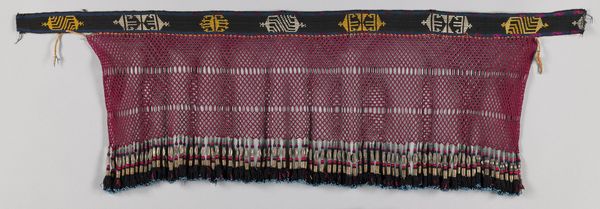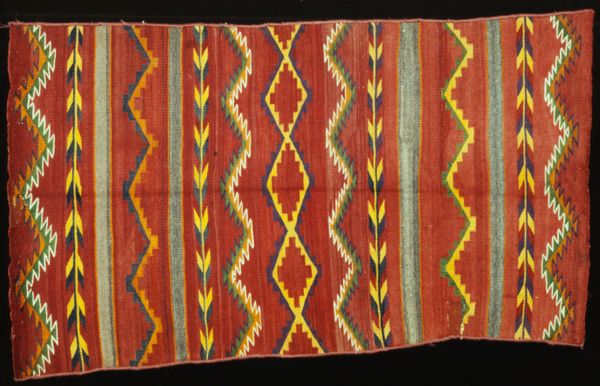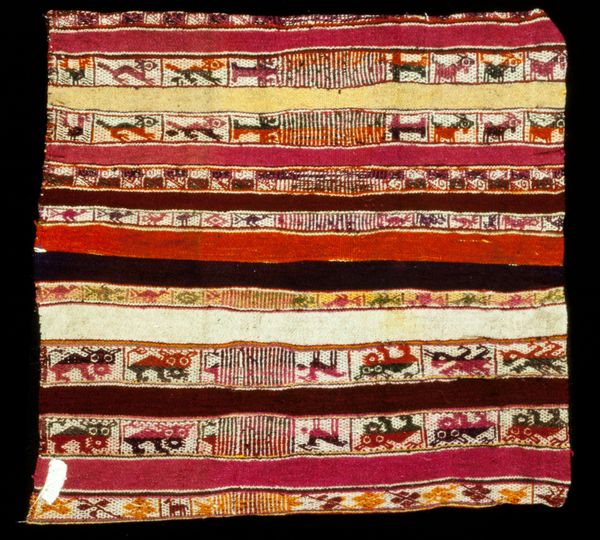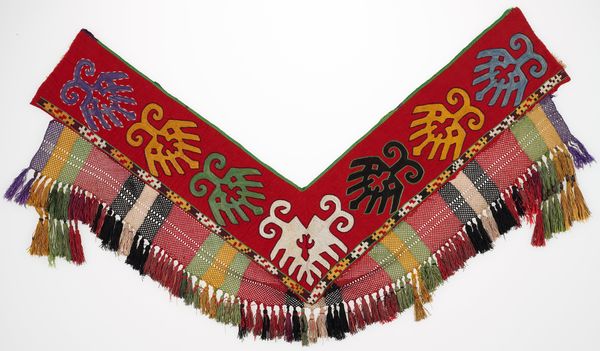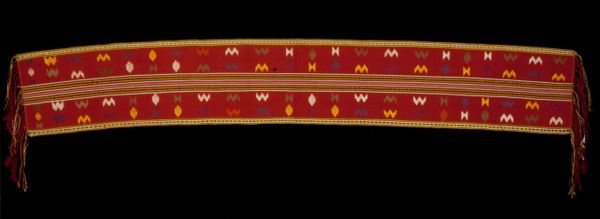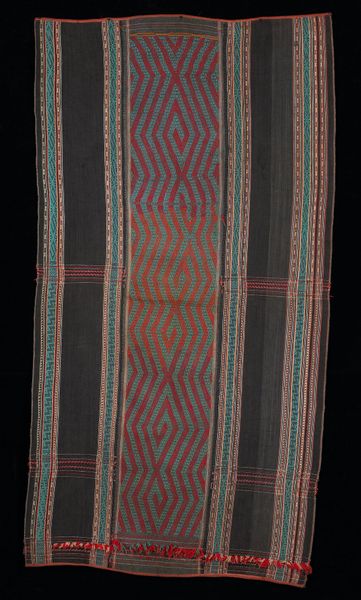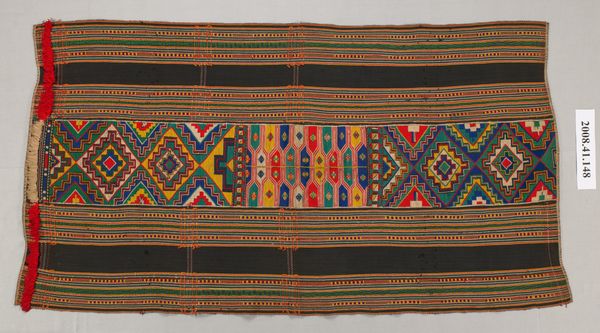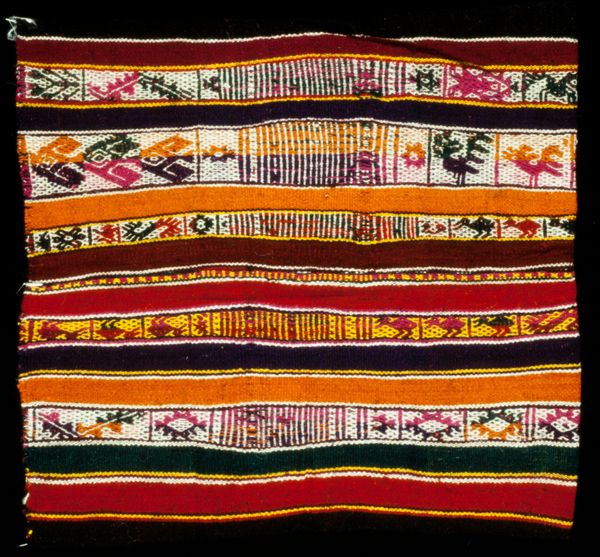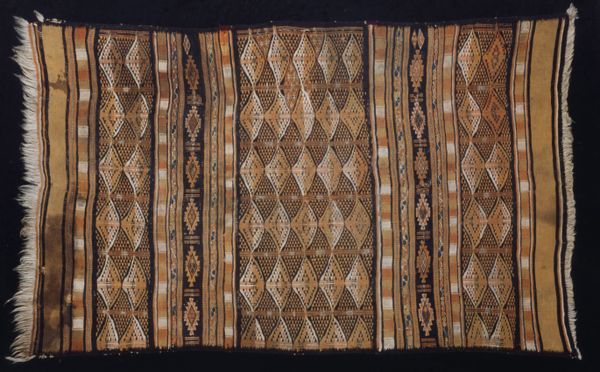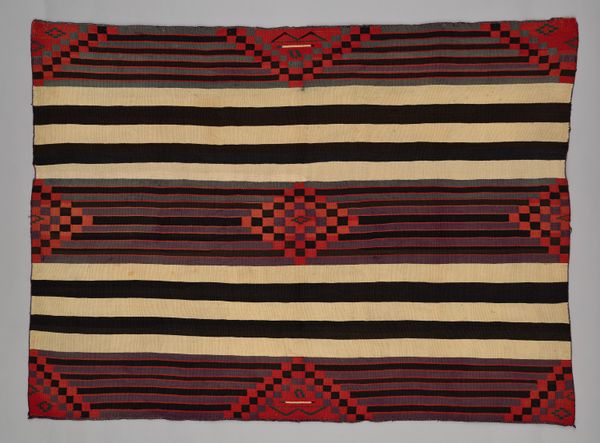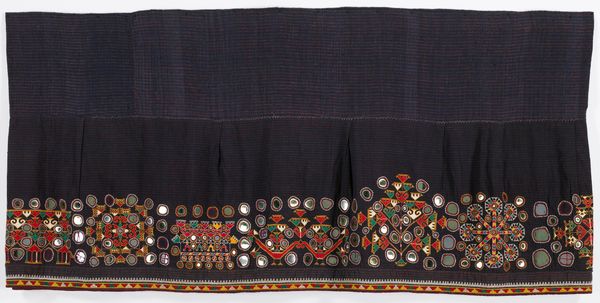
silk, weaving, textile, cotton
#
pattern heavy
#
natural stone pattern
#
silk
#
pattern
#
weaving
#
textile
#
fashion and textile design
#
pattern design
#
repetitive shape and pattern
#
repetition of pattern
#
regular pattern
#
pattern repetition
#
cotton
#
textile design
#
decorative-art
#
layered pattern
Dimensions: 96 x 9 1/2 in. (243.84 x 24.13 cm) (including tassels)
Copyright: Public Domain
Editor: So this is an early 20th-century Tent Band currently held at the Minneapolis Institute of Art. The description lists cotton and silk as the materials. There’s a real emphasis on the hand-made quality of the embroidery, right? The tassels, the stitching – you can really see the work that went into it. What strikes you most about its construction? Curator: For me, the beauty lies in understanding how the materiality and process intertwine with social practices. Consider, this wasn’t made in a vacuum; the weaver’s labor and access to silk and cotton, perhaps acquired through trade routes or local markets, dictated its very form. This tension between readily available and luxurious materials—cotton versus silk—speaks volumes about the economy and social structures of its time. Editor: That's a fascinating perspective. I hadn't considered the implications of accessing those different materials. Curator: And what about the pattern? Do you see connections to other textiles or art forms in that repetition, that rhythmic design? Think about the tools needed, the shared knowledge required to reproduce such a pattern consistently. Editor: Well, there is something incredibly grounding and tactile about textiles; this weaving, for instance, feels like the threads create tangible patterns—there's a certain universal language within. Also, each thread tells a story about human interaction, knowledge, and even power dynamics. Curator: Precisely! Weaving isn't just a craft; it's a form of communication and cultural exchange. Considering who made this tent band, for whom, and under what conditions reveals how such seemingly simple objects participated in larger systems of labor and meaning-making. The object itself becomes less precious than the network of labor, trade, and cultural values that allowed it to exist. Editor: This really puts a different spin on how I perceive textiles. Thinking about them as tangible representations of social and economic realities is very powerful. I will not look at fabrics in quite the same way again. Curator: Agreed. It allows a deeper appreciation of the work and challenges that went into this and all similar artworks.
Comments
No comments
Be the first to comment and join the conversation on the ultimate creative platform.

